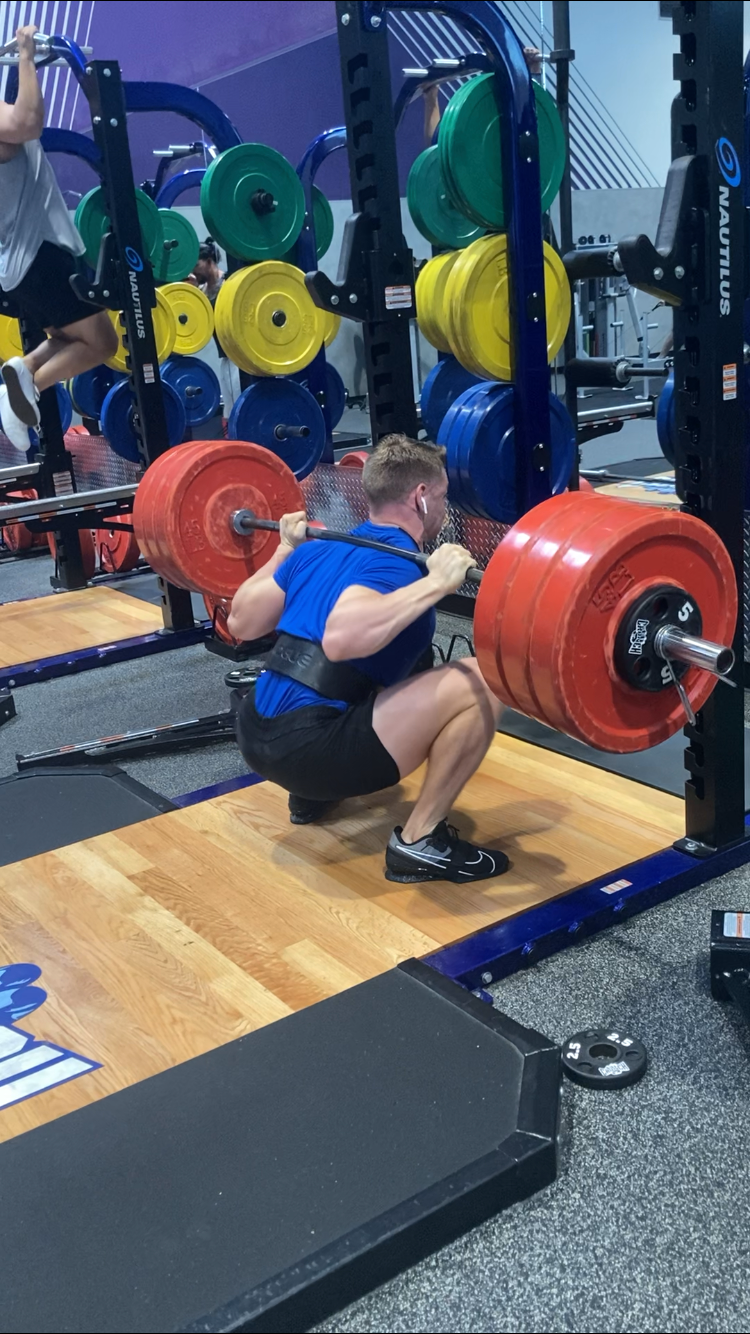
The importance of depth in the squat:
It is critical to reach proper depth in a squat.
There are many acceptable ways to perform a squat, and each of these depend on your particular proportions (leg length, torso length, arm length, etc) and mobility. With that said, the standard and minimal acceptable depth you should aim for is
parallel.
I go much below parallel, but that doesn’t make my squat any better than someone who only squats right at parellel before coming back up. In fact, going any deeper than parallel ultimately limits the amount of weight you can use. This can be expressed using the simple formula for work: Work = Force x Distance. Increasing the distance (by increasing the range of motion over the entirety of the squat) increases the amount of total work that must be performed. This is inefficient, and in a hypothetical sense, prematurely limits the total amount of weight a person can squat compared to if they only went to parallel.
So why am I going so low?
The answer: anatomy. When you stretch (extend) a rubber band, the increased tension causes it to “want” to snap back into its original, unstretched position. As you squat, you are extending the adductors (inner thigh muscles) and hamstrings. These muscles are now the rubber band, stretching as you descend in the squat. This builds up tension in your Golgi Tendon Organs, letting the muscles know to prepare for an incoming contraction as they become become more and more extended. This quick, rubber-band-like snapping effect produces the “bounce” out from the squat. My personal anatomy and squat form provides me with the most bounce at this position – it may be different for you, but at minumum, you should be parallel. If you cannot get to parallel, work on your mobility first before adding weight to the bar.
Note: This is much different than dive-bombing the squat and bouncing out from the bottom using your momentum. Doing this is just asking for an injury to take place.